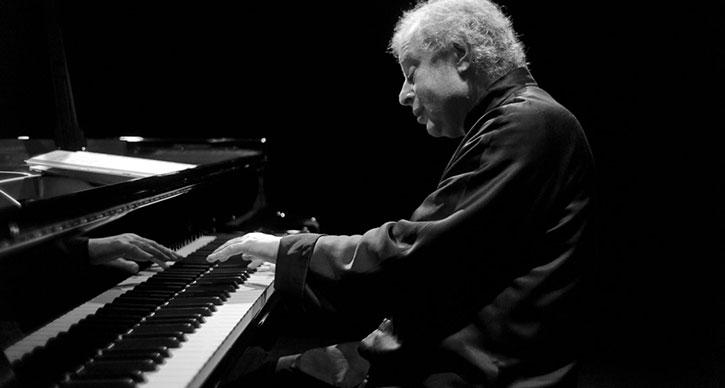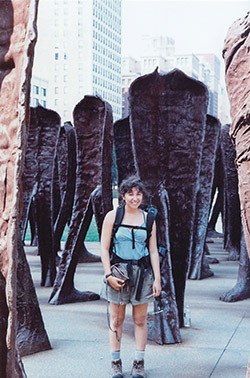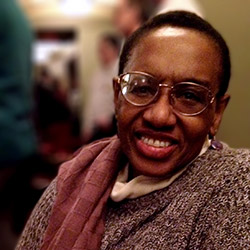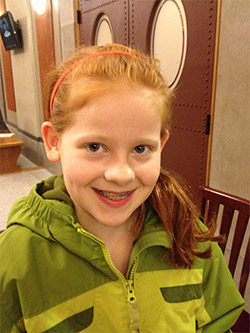Community Spotlight: U-M Piano Professor Arthur Greene
Editor’s note: Isabel Park is a regular contributor to UMS Lobby and an undergraduate pianist in the U-M School of Music, Theatre & Dance. Isabel explores connections between the UMS season and student life.

Photo: Pianist Andras Schiff performs in Ann Arbor February 16-20, 2016. Photo by Nadia Romanini.
This winter, master pianist Sir András Schiff visits Ann Arbor for three concerts exploring the “The Last Sonatas,” later-life sonatas, of Haydn, Mozart, Beethoven, and Schubert. He says of the sonata, that it is “one of the greatest inventions in Western music, and it is inexhaustible.”
We often view the musicians on stage as learning students or a developing performers, but, perhaps more rarely, do we think of the musicians as a teachers. Teachers can play a significant role in shaping a student’s musical style and artistic ideas. To gain some insight into the perspective of teachers and find out more about what it’s like to help younger musicians grow into independent artists, I talked to my own teacher at U-M, Arthur Greene.
Isabel Park: We’ve worked on the Beethoven Op. 109 together. Can you give an overview of the process of teaching a piece from the teacher’s perspective?
Arthur Greene: There are two sides to teaching. One is communicating and developing a conception of the work – to put it in an overly simplistic way, what the work means. The other is responding to the particular student’s way of playing and learning. With a late Beethoven sonata, our work is weighted towards the meaning of the music, because it is so particular, dense, and at first enigmatic. As far as the student’s playing, I always try to combine technical suggestions with musical ideas, based on what is working or what is not working for the student.
IP: I know this is a difficult question, but when is a piece “good enough” or ready to be performed?
AG: We had a visiting “great artist” when I was first teaching at Michigan, Eugene Istomin, to teach every few weeks. He said that in his life there were never any performances he was happy with, and usually he was very distressed after playing, because they fell so far short of perfection. I don’t think like that. When the music feels part of you, well memorized, with technical issues working 90% of the time, and if you feel you have something to say with the piece, it is ready to play.
IP: Is there anything that, say, can’t be taught to a student – or anything that you consider to be the responsibility of the student?
AG: Almost everything is the responsibility of the student. Most great teachers, such as Theodore Leschetizky, would have been unknown if they didn’t have students the caliber of Ignaz Friedman and Artur Schnabel. Teachers can inspire and guide, but the student should not rely on the teacher ultimately, or else he or she will never be an artist.
IP: What kind of a role do these classical sonatas play in the piano/classical music repertoire in general and in the repertoire of a pianist?
AG: Beethoven, Mozart, and Haydn represent the summit of the tonal system, and their sonatas are simply great music, so I can’t imagine being a pianist without playing them.
IP: For this program, Schiff is exploring the “last” sonatas of four master composers and the ways in which later-life creativity or near-death creativity was expressed for each of them. What’s your take on this programmatic structure, especially given that your work focuses on nurturing the emerging creativity of student pianists?
AG: Most composers whose works I know well develop a more subtle, complex, and personal style in their later works – Chopin, Beethoven, and Mozart for example. These are the pieces I am personally most drawn too, and I am not surprised that Schiff is as well.
IP: It’s often said that one shouldn’t say the masters until one as older (this is said humorously). What do you think about this idea?
AG: Kids might not have the last word on late Beethoven, but I’ve heard horrible performances of mature works by mature pianists as well. I like the idea of a work maturing in one’s soul for many years. Also, the idea that one must learn all the patterns of earlier music of a composer before tackling the later works is dangerous, because it fosters a paint-by-numbers way of playing. It is better to consider each pattern, phrase, and piece on its own, rather than as a meme. Overly patterned playing, and the desire to find the correct way to play something, are the reasons piano playing has become so dull.
IP: What are your favorite works to introduce to students?
AG: Chopin mazurkas. They are fascinating emotionally and rhythmically, and most of them are rarely played.
Thinking about the teaching embedded in music adds another dimension of complexity and inspiration to a performance. I’m excited to listen to pianist András Schiff’s programs with an eye for these complexities.
Sir András Schiff performs three concerts in Ann Arbor February 16-20, 2016.
Who’s Sitting Next to You?
Editor’s Note: This post is a part of a series featuring our audience! Do you know someone who should be featured? Email suggestions to ums-lobby@umich.edu or feel free to snap a photo and ask a question and send it to us.
 Rachel Pernick is a sophomore undergraduate student at the University of Michigan in the Residential College. She is from Huntington Woods, Michigan. This is her second season ushering.
Rachel Pernick is a sophomore undergraduate student at the University of Michigan in the Residential College. She is from Huntington Woods, Michigan. This is her second season ushering.
Kate Gorman (UMS Front of House Coordinator): What inspires you to be an excellent usher?
Rachel: As a student at the U-M, and this being only my second year living in Ann Arbor, I am entirely and constantly in awe of the staggering season listings and lineups that this city continues to bring to its citizens, who are ever-dedicated to the arts.
Especially as a young person in a crowd of often older folks, I hope to serve as a sort of pioneer and encourage younger folks to embrace the arts opportunities this city has to offer. I often find myself just as (if not more!) excited for a performance than the patrons are, even, and I know that my passion for the arts comes across in my interactions with patrons!
 Evelynn Hawkins (public radio broadcaster) was sitting next to Beth Gilliland (UMS Tessitura Systems Administrator).
Evelynn Hawkins (public radio broadcaster) was sitting next to Beth Gilliland (UMS Tessitura Systems Administrator).
Beth: To you, what does it mean to “be present” during a performance or another arts experience?
Evelynn: In the sense that you’re physically there – you are “present.” You are catching a moment in a singular time and place. But something is “different.” Artists feed off the audience – they are like food for an artist. You can tell – you can feel it in the audience. Even the audience feeds off of the audience. Experiencing improv at this performance is like a cat’s cradle – it is still just a string – but something always changing.
Beth: Do you have a favorite place in the world or in Ann Arbor?
Evelynn: I love the West Coast – the mountains, the trees, the ocean – it has it all!!
 Elisabeth K., 12, was sitting next to Sara Billmann (UMS Director of Marketing & Communications).
Elisabeth K., 12, was sitting next to Sara Billmann (UMS Director of Marketing & Communications).
Sara: Why did you come to this performance?
Elisabeth: Because my mom made me.
Sara: What’s the most memorable concert you’ve been to at Hill Auditorium?
Elisabeth: Last year, my class came on a field trip for the New Orleans jazz concert.
Sara: On a scale of 1-10, with 1 being the absolute most horrible thing your mother ever made you do and 10 being the most awesome, how does this concert rank?
Elisabeth: 9.25
Do you know someone who should be featured on “Who’s Sitting Next to You”? Are you sitting next to someone at a performance right now? Send us a recommendation, or a quick Q&A with a photo to ums-lobby@umich.edu.
APAP + RCLA = LDI
Editor’s Note: Mary Roeder works in Education & Community Engagement at UMS and is also our resident jet-setter and theater expert.
A couple of months ago I got some great news—I found out I had been accepted into the second round of the Leadership Development Institute (LDI), a program facilitated by —get ready for a mouthful— the Association of Arts Presenters (APAP) and the Research Center for Leadership in Action at the Robert F. Wagner Graduate School of Public Service at New York University (RCLA). Phew. APAP is the national service and advocacy organization that looks after the performing arts industry here in the US. Many of us UMS staffers attend their annual conference in NYC every January. The work of the RCLA is broadly centered around “moving beyond the traditional ‘heroic’ image of a leader to facilitating leadership in which people work across sectors and boundaries to find common solutions.” So, APAP + RCLA = LDI, and LDI’s main aim is to develop the leadership capacity of mid-career performing arts professionals.
How is this accomplished? Through a specific kind of research that the 14 of us chosen to participate are doing together called collaborative inquiry (CI). CI is a practice grounded in the idea that we can come to know certain things by researching “with” rather than “on.” Put another way, each of us will serve as both the test subject and the researcher in our respective “lab” (our organization). The process is moved forward through a repeated series of reflection and action around a certain theme in which the participants all have a vested interest. Our group is researching how an organization can come to know and connect with its community. The output—other than 14 newly minted performing arts leaders/forces to be reckoned with—will be a white paper we’ll present at the aforementioned APAP Conference in January 2013.
Our first session was held at the end of April in Austin, Texas. I’d never before been to the great magical land of cowboys and BBQ, so I was, needless to say, very excited to be there. With our two facilitators/den mothers—RCLA executive director Bethany Godsoe and Theresa Holden, co-director of Holden and Arts Associates—securely at the reins, we spent a great deal of time on the first day getting to know the people behind all those intimidating bios and learning about the process. By the second day (and several trees worth of sticky notes later) we were well on our way towards narrowing down our specific research question—the thesis that will ultimately form the backbone of our work. By the final day, we’d been assigned accountability partners (Brad and Beth are the unlucky pair tasked with keeping me on track) and had settled on a series of action steps we’d each commit to take between then and our next session in June.
So that’s where we’re at—each working hard to get our homework done by June 18 when we take the city of Washington DC by storm. I’ll delve more into the specifics next time, so get ready!
In the meantime, I am pleased to present to you my 13 esteemed partners in this lofty endeavor (and a brief fun fact about each):
- Bobby Asher, Clarice Smith Performing Arts Center, College Park, MD (was only a few short weeks away from marriage during the time of our first convening and was remarkably present)
- Brad Carlin, Fusebox Festival, Austin, TX (was only a day away from the start of his organizations’ festival launch and was remarkably present)
- Rachel DeGuzman, Rochester City Ballet, Rochester, NY (a Michigan native and U-M Alum!)
- Shirley Elliott, Tulsa Performing Arts Center Trust, Tulsa, OK (fellow Fringe fanatic—shared stories with me from her first trip to Edinburgh)
- Sharon Fantl, Redfern Arts Center/Keene State College, Keene, NH (state-straddling New Englander, living in Vermont, but working in New Hampshire)
- Emily Harney, MAPP International Productions, New York, NY (very recently engaged at the time of our meeting)
- Brooke Horejsi, College of St. Benedict/St. John’s University Fine Arts Programmin*, St. Joseph,MN (awoke ridiculously early on our last morning in Austin to do 6am hot yoga across town)
- Rebekah Lengel, Miami Light Project, Miami, FL (the second youngest member of the group and the lone holdout from Facebook)
- Mollie McFarland, AXIS Dance Company, Oakland, CA (the first to hit the dance floor at the Continental Club in Austin)
- Judy Oliver-Turner, Washington Center for the Performing Arts, Olympia, WA (in a group full of mommies, wins with the most kids)
- Andre Perry, The Englert Theater, Iowa City, IA (Iowan-by way of DC and CA-indie rocker immortalized in cartoon form on popular music blog Daytrotter)
- Liza Sacheli Lloyd, Mahaney Center for the Arts, Middlebury College, Middlebury, VT (an avid hockey player!)
- Elizabeth Snodgrass, Carnegie Hall, New York, NY (had a do-over of a certain milestone birthday because she was sick during the actual one; purchased herself a ukulele to celebrate)
Traveling to Africa…by way of Detroit
Each season, UMS emphasizes a geographic area of the world that is also represented by a significant population here in Southeastern Michigan. This year we focus on Africa, both in our main stage artistic presentations and in our community engagement work. We began six years ago with an Arab World music festival, followed by an Africa focus, a festival celebrating Mexico and the Americas, a focus on Asia, and we’re now repeating the cycle…in Africa once again. (more…)



